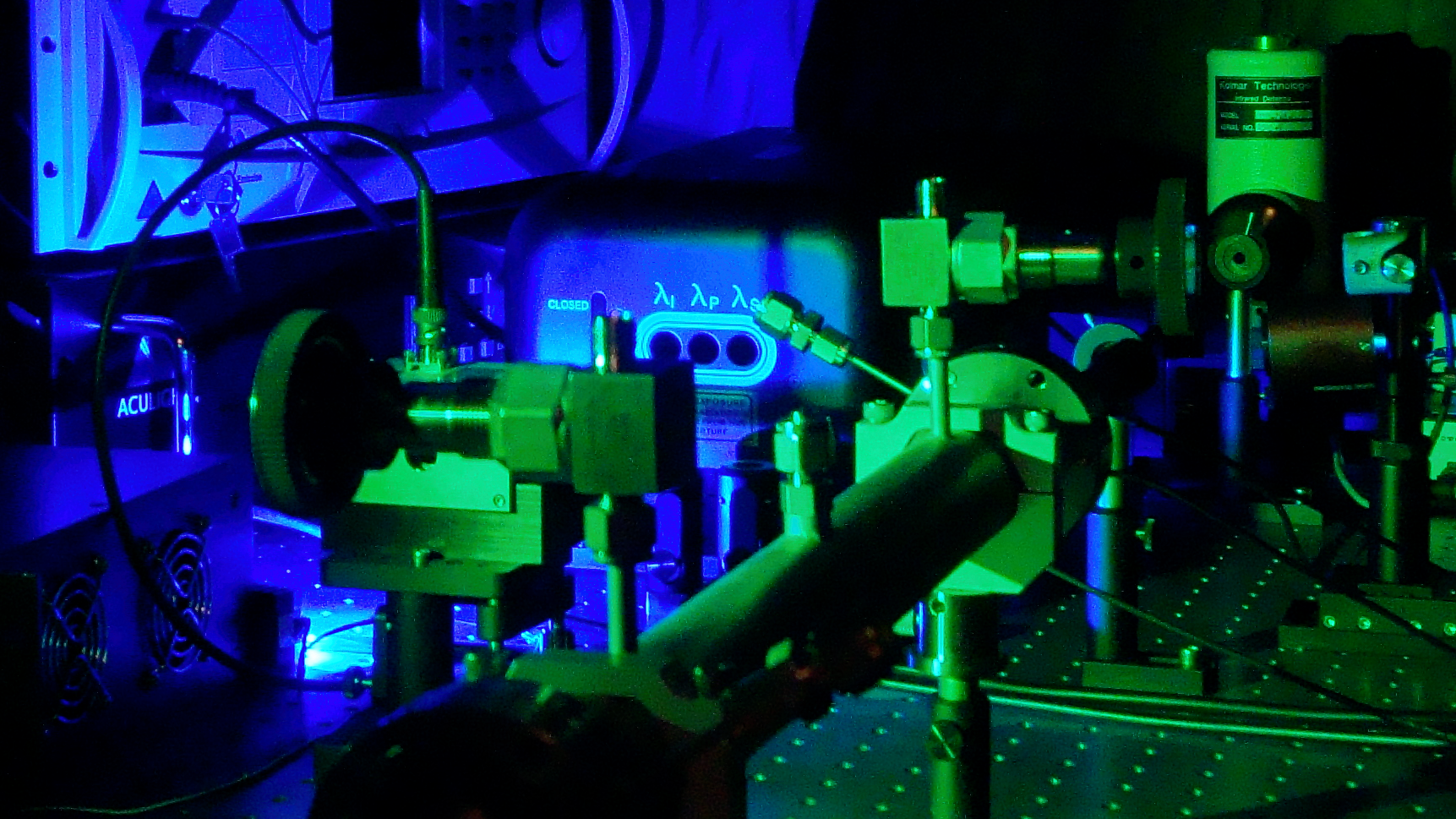One useful technique for ascertaining the concentration of gas components in a sample is laser-based absorption spectroscopy.
 The setup of the laser absorption spectrometer for the selective optical saturation in the laboratory. Image Credit: Institute of Physical Chemistry, Kiel University
The setup of the laser absorption spectrometer for the selective optical saturation in the laboratory. Image Credit: Institute of Physical Chemistry, Kiel University
Contemporary devices are finely tuned to detect highly specific gases, including trace gases found in the atmosphere, those present in combustion exhaust emissions, and gases utilized in technical plasma applications.
They accomplish this by calculating the percentage of light at a certain wavelength that is absorbed or attenuated by a sample. This makes it possible to calculate the gas's concentration. The chemical to be tested determines which detection wavelength should be used. The fact that multiple molecules can absorb the same light, even at a wavelength that has been carefully selected, is a typical issue.
The absorption spectra of the different gas molecules sometimes overlap very significantly. This means that if I want to detect molecule A, I also always get a varying degree of strong signal from molecule B.
Gernot Friedrichs, Professor, Institute of Physical Chemistry, Kiel University
The measurement method’s efficiency is limited by this phenomenon known as cross-sensitivity. Up until now, this issue has either been solved or at least lessened by performing additional measurements at various wavelengths, such as measuring spectra, or by using gas chromatography techniques to separate the interfering gases prior to the measurement.
Gernot Friedrichs together with Dr. Ibrahim Sadiek, a Former Ph.D. Candidate at the Leibniz Institute for Plasma Science and Technology e.V. (INP), have now demonstrated that there is an easier solution.
The scientists have created a technique that allows them to get beyond this cross-sensitivity in absorption spectroscopy, even in cases when single-wavelength data are made. The scientific journal Scientific Reports recently published the feasibility study for the novel, patent-pending two species-one wavelength (2S1W) technique based on selective optical saturation.
Eliminating Interfering Signals Using Optical Saturation
The novel technique takes advantage of the optical saturation phenomenon in molecules. Only very high light intensities - which are now easily produced with lasers - cause the state of optical saturation. Subsequently, the molecules exhibit “transparency” in absorption spectroscopy, signifying that the light emitted by the radiation is no longer diminished.
The characteristic of the corresponding gas type is the point at which the sample turns transparent. Because optical saturation skews the concentration measurement, it was formerly thought to be detrimental for absorption measurements and should be avoided at all costs.
As Sadiek and Friedrichs’ investigation has now shown, using selective optical saturation can even make it possible to measure the amounts of two molecules that totally interfere with one another individually at a given wavelength.
To do so, we varied the light intensity very rapidly and over a wide range in a special measuring cell. At low light intensity, the sum of the absorptions of both species is measured, and at high light intensity, one of the molecules is saturated. So we only detected the signal from one species. In our case, the methyl chloride was detected, since the methane was already saturated. When we first tried this, we were fascinated by how well it actually works to separate the signals from both species in this conceptually simple way.
Ibrahim Sadiek, Professor, Institute of Physical Chemistry, Kiel University
A typical problem in practice is, for example, detecting chlorinated hydrocarbons, which occur in very low concentrations in the atmosphere.
If you want to detect them without separating the mixture beforehand, you automatically encounter the problem that the trace gases present in higher concentrations, such as carbon dioxide or methane and especially water vapor, i.e. the humidity, interfere with the measurement. With our method, we can simply make these interfering gases invisible in the spectrum.
Gernot Friedrichs, Professor, Institute of Physical Chemistry, Kiel University
Currently, his group is working on maritime research projects to advance the technique for application in traditional absorption spectrometers. Then, field measurements will show the potential for lowering cross-sensitivities to better explore exchange processes at the water-air interface. If the trace gases have sufficiently diverse saturation intensities, the approach can also be used in theory to detect many trace gases at once.
Journal Reference:
Sadiek, I. & Friedrichs, G. (2024) Two species - one wavelength detection based on selective optical saturation spectroscopy. Scientific Reports. doi.org/10.1038/s41598-023-44195-3